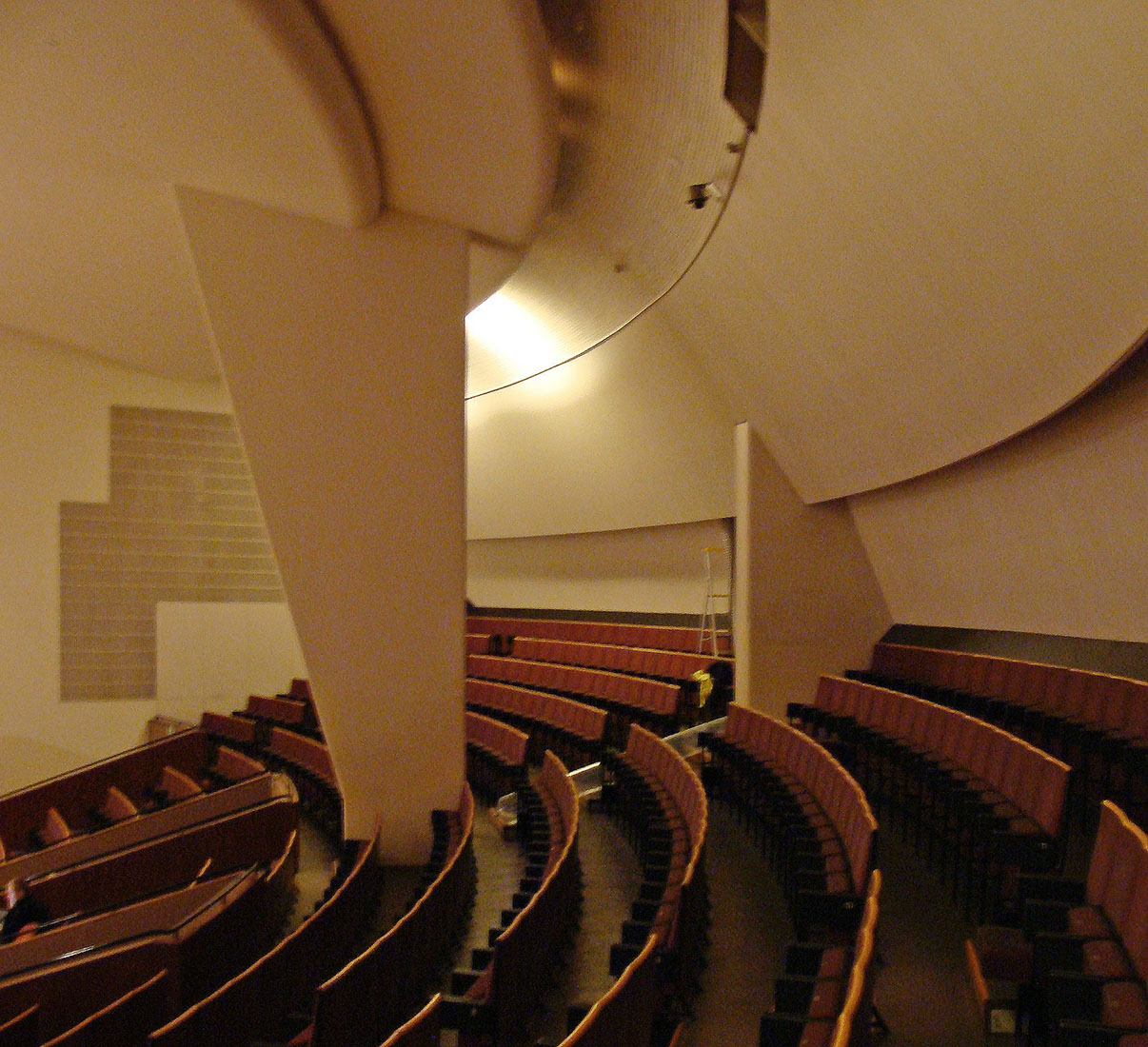 |
 |
 |
 |


House of Culture
Sturenkatu 4, Helsinki
1952 - 1958
When design work for the House of Culture (Kultuuritalo in Finnish) by Alvar Aalto started, the office was busy with substantial workload. There were several other designs on the drawing board, such as a studio house in Helsinki or a large concert hall in Oulo, while construction on multiple other projects was under way, among them the first phase of the Pedagogical University in Jyväskylä. However, the House of Culture emerged as the most memorable Alvar Aalto design of this period. For sure, the House of Culture represents the pinnacle of Alvar Aalto's brick architecture of the 1950s. Originally the building was conceived as the headquarters for the Finnish Communist Party. They had asked Alvar Aalto to design the party's headquarters in combination with associated facilities and a cultural centre for a recently acquired site beneath the Alppiharju cliffs in Helsinki. The sketches took their final form just short before construction got under way in 1955. After three years the inauguration took place in 1958. The auditorium became famous for its excellent acoustics, and in the meantime, the House of Culture has established itself as a popular concert venue in Helsinki. In 1989 the House of Culture was declared a national monument. After a meticulous restoration in the years 1990 - 1991 the ensemble was sold by the Communist Party to a nonprofit organization.
The House of Culture consists of a rectilinear office block clad with copper and a curved auditorium in red brick. These independent building volumes are connected by a long canopy, binding them together. The tripartite appearance of the building is a consequence of the variety of programs, which were intended to take place here. The intended use as a headquarters of a political party meant the complex would be used for daily bureaucratic and administrative business as well as for special public events, while the design had to keep with the political ideologies it was to represent. The two mentioned main elements of the ensemble arose from the two main parts of the program, while the space between them was intended to serve as a public plaza and reception area.
The irregular and undulating volume of the auditorium, which is located on the left side of the plaza, is made of brick. Construction of this form required extensive experiments, resulting in a particular brick, capable of forming both concave and convex walls of varying radii. The brick which was developed for this design is not rectangular, but fanned, so that each brick forms a small segment of a circle. For greater ease of assembley, the corners of the bricks were rounded, at the same time this resulted in a more complex play of light on the surfaces of the façade, and even helped to prevent fractures in the walls. Even if Alvar Aalto had made extensive use of bricks in previous projects, the House of Culture was his first design using a non-orthogonal brick unit. Later he employed a similar treatment in other projects, but ultimately he made little use of this special brick. After the completion of the House of Culture, Alvar Aalto started to use ceramic tiles and marble cladding during the 1960s.
The auditorium, which is the centrepiece of the ensemble, features a rather unusual layout. This space is much wider than it is deep, appearing as a broad and asymmetrical clamshell. Within the auditorium great attention was paid to controlling acoustics. There are arranged various panels which either reflect or absorb sound. Depending on the kind of event taking place and the number of spectators, certain panels can even be reomoved or interchanged, without disturbing the aesthetic envisioned by Alvar Aalto. The seating area in the auditorium is split into several subsections, divided from each other by the access aisles. A pair of elegantly finned concrete columns in the auditorium are of special interest. The entrance to the auditorium is made by the way of a vast lobby, following the curve of the auditorium.
The five-storey office wing was originally intended to be clad also in red brick. In the end this volume, containing 110 offices as well as meeting and conference rooms, became clad with copper to contrast with the auditorium. The connecting wing contains various spaces such as a lobby with cloakroom, classrooms, a lecture auditorium, a library and a gymnasium in the basement.